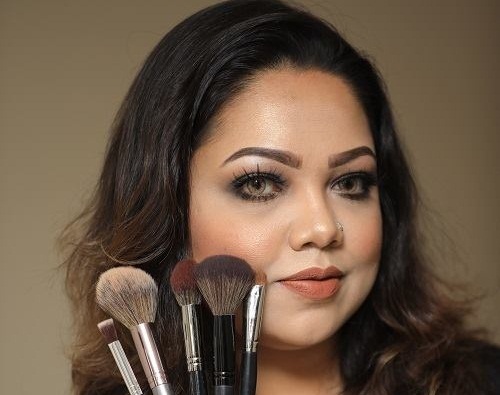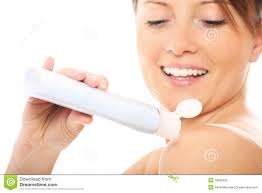What do you look for in a body moisturiser? Is it the smell, how smooth it leaves your skin feeling, or how much it costs? If you are attracted by terms such as “dermatologist recommended” or “hypoallergenic”, you may be disappointed. A study of the top 100 best-selling whole body moisturisers found that not only did prices vary by 9,400% but that 95% of the products claiming to be dermatologist-recommended had at least one ingredient that could cause an allergy. Of the hypoallergenic moisturisers, 83% contained a substance on the allergen list of the North American Contact Dermatitis Group (NACDG). The most common potential allergy-causing ingredients were fragrance mix and paraben mix (a preservative).
The solution

What do you look for in a body moisturiser? Is it the smell, how smooth it leaves your skin feeling, or how much it costs? If you are attracted by terms such as “dermatologist recommended” or “hypoallergenic”, you may be disappointed. A study of the top 100 best-selling whole body moisturisers found that not only did prices vary by 9,400% but that 95% of the products claiming to be dermatologist-recommended had at least one ingredient that could cause an allergy. Of the hypoallergenic moisturisers, 83% contained a substance on the allergen list of the North American Contact Dermatitis Group (NACDG). The most common potential allergy-causing ingredients were fragrance mix and paraben mix (a preservative).
The solution

Winter tends to make skin dry and can exacerbate existing skin conditions. The dermatologists who carried out the study were interested in comparing moisturisers they would recommend to consumers and ones that people are actually buying. Between 5% and 45% of people (surveys vary) say they have sensitive skin that, when they use creams, can become red and irritated. What dermatologists suggest is that they use moisturisers free of additives, fragrances and perfume. Unfortunately, out of those moisturisers claiming to be fragrance-free, around 45% had at least one ingredient that was a fragrance cross-reactor and could irritate the skin. One moisturiser labelled “natural” had the highest number of potentially allergenic ingredients from the NACDG list.
Moisturisers work by hydrating the skin and maintaining the epidermal barrier (the outermost layer of the skin) – this both heals and protects the skin from being fragile and easily broken. And the type of moisturiser you buy can make a difference – especially to your wallet. The authors of the research paper say that the terms “dermatologically recommended” and “hypoallergenic” are “marketing tools with minimal to no regulatory oversight or substantiation”. They increase the price of moisturisers, but there is no evidence they improve their effectiveness.
They point out that many of the most affordable moisturisers, such as coconut oil or pure shea butter, have no allergens. While lotions are the most popular moisturisers, dermatologists recommend we use ointments if our skin is really dry. Lotions contain water, so they evaporate quickly on the skin and then don’t do anything useful. However, people tend not to like ointments because they feel greasy.
Dr Steve Xu, the lead researcher and dermatologist at Northwestern’s Feinberg School of Medicine, recommends that most people who have easily irritated skin pick “bland” moisturisers without a fragrance and with few ingredients. He says that you don’t need separate face and body moisturisers, but recognises that people buy both because they prefer less heavy creams on the face. In fact, the moisturiser most widely recommended by dermatologists is petroleum jelly – it is greasy, but is great at protecting skin.

Winter tends to make skin dry and can exacerbate existing skin conditions. The dermatologists who carried out the study were interested in comparing moisturisers they would recommend to consumers and ones that people are actually buying. Between 5% and 45% of people (surveys vary) say they have sensitive skin that, when they use creams, can become red and irritated. What dermatologists suggest is that they use moisturisers free of additives, fragrances and perfume. Unfortunately, out of those moisturisers claiming to be fragrance-free, around 45% had at least one ingredient that was a fragrance cross-reactor and could irritate the skin. One moisturiser labelled “natural” had the highest number of potentially allergenic ingredients from the NACDG list.
Moisturisers work by hydrating the skin and maintaining the epidermal barrier (the outermost layer of the skin) – this both heals and protects the skin from being fragile and easily broken. And the type of moisturiser you buy can make a difference – especially to your wallet. The authors of the research paper say that the terms “dermatologically recommended” and “hypoallergenic” are “marketing tools with minimal to no regulatory oversight or substantiation”. They increase the price of moisturisers, but there is no evidence they improve their effectiveness.
They point out that many of the most affordable moisturisers, such as coconut oil or pure shea butter, have no allergens. While lotions are the most popular moisturisers, dermatologists recommend we use ointments if our skin is really dry. Lotions contain water, so they evaporate quickly on the skin and then don’t do anything useful. However, people tend not to like ointments because they feel greasy.

Dr Steve Xu, the lead researcher and dermatologist at Northwestern’s Feinberg School of Medicine, recommends that most people who have easily irritated skin pick “bland” moisturisers without a fragrance and with few ingredients. He says that you don’t need separate face and body moisturisers, but recognises that people buy both because they prefer less heavy creams on the face. In fact, the moisturiser most widely recommended by dermatologists is petroleum jelly – it is greasy, but is great at protecting skin.
Source : Daily observer
Collected by RG














